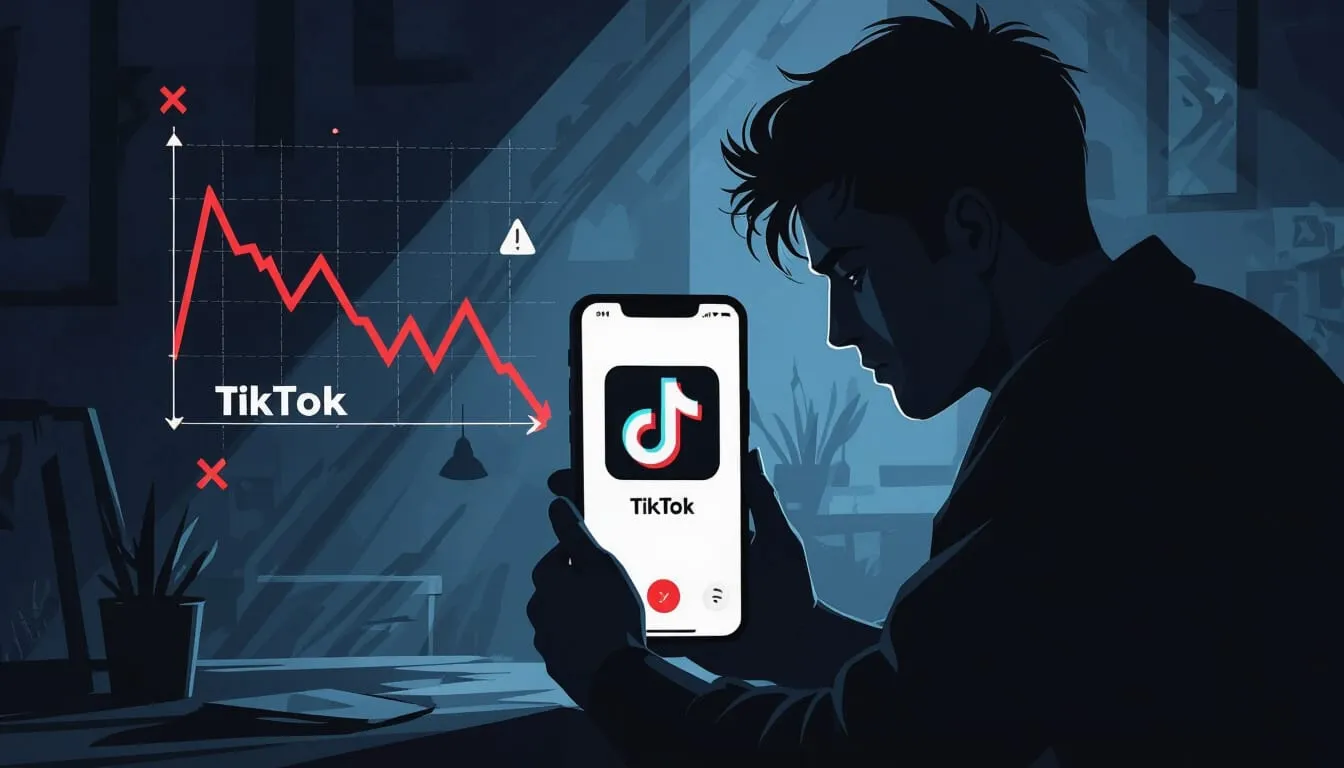
I used to think captions didn’t matter that much. You talk, you post, the words just help people follow along, right?
Wrong as hell (:
Turns out your on-screen text is doing way more than you think. It’s not just subtitles. It’s rhythm, timing, emotion… It’s the difference between someone watching two seconds and watching all the way through. So after spending way too many nights editing and re-editing my videos, here’s what I learned. Five caption tricks that actually work, and three that quietly kill your reach.
THE 5 CAPTION TRICKS THAT BOOST WATCH TIME
1. Sync Text with Emotion, Not Just Timing
Everybody talks about matching captions to what you’re saying. But that’s basic shit. The real trick is syncing them to HOW you’re saying it.
When your voice rises, make the text pop right there. When you drop the tone, let it fade or switch lines. It’s not about subtitles. It’s about energy. Think of it this way: if you’re building up to a reveal, your captions should build too. Don’t drop the punchline text three seconds early. Don’t let the tension dissolve before the payoff hits!
I started testing this by recording myself and watching where I naturally got louder or softer. Then I placed caption breaks at those exact moments. The difference was immediate. Comments started saying things like “I don’t know why but I watched this three times.” That’s the sync working. Your words on screen need to land at the exact moment your voice does, creating this subconscious rhythm that keeps people locked in…
2. Keep It Short (One Line at a Time)
TikTok isn’t Netflix. People aren’t reading essays on your screen.
Break every sentence. One beat, one line. Let people breathe between thoughts. If your caption makes them blink twice to catch up, they’re gone. Here’s a good test: read your caption out loud at normal speed. If you run out of breath before finishing the line, it’s too long!
Most viewers give each caption maybe half a second of attention. That’s barely enough time to process five or six words. The best creators I’ve studied never put more than one complete thought on screen at once. They let each idea land before moving to the next. It feels less like reading and more like listening with your eyes, which is exactly what you want…
3. Make Captions Feel Spoken
Don’t write like you’re writing. Write like you’re talking.
Half sentences. No grammar police. Just flow.
Example: Not “This is what I learned today.” Try “so this happened today…” That’s how real speech looks on screen and it makes people feel like they’re in the room with you. Real conversation is messy. We pause mid-thought. We restart sentences. We use words like “like” and “honestly” and “wait” that English teachers hate but humans actually use!
When I stopped trying to make my text “correct” and started making it conversational, my completion rates jumped. People weren’t just watching anymore. They were listening. Try recording yourself explaining something to a friend, then transcribe it exactly as it comes out, filler words and all. That raw transcript will almost always feel more authentic than anything you’d write from scratch.
4. Highlight Contrast
Grab one unexpected word and make it stand out. Different color, bold, whatever.
Like this: “I thought this would flop.” Make flop red. Your brain can’t ignore contrast. It stops. It looks. It remembers. Just don’t overdo it – one or two highlights per video is plenty!
The key word here is UNEXPECTED. Don’t highlight the word people would naturally emphasize. Highlight the word that surprises them. If you’re saying “this was the worst advice I ever got,” don’t make worst stand out. Make advice stand out. It creates a little mental hiccup that keeps people engaged.
I also started using color strategically. Red for warnings or mistakes. Green for wins. Yellow for surprising moments. After a few videos, your audience starts associating those colors with certain feelings. It becomes a visual language they understand without thinking about it!

5. Use Captions as Rhythm, Not Subtitles
You’re not transcribing. You’re editing with words. Each pop of text is a mini-beat.
Use it to control pace, drop a pause between lines, build tension before the next cut. Good captions make the video MOVE. Think of your captions like a drummer in a band. They set the tempo. They create the groove. Sometimes they need to speed up to match your energy. Sometimes they need to slow down to let a moment breathe…
I learned this the hard way after posting a video where I talked fast but my captions appeared slowly. People in the comments said it felt “off” even though they couldn’t explain why. The mismatch between vocal rhythm and visual rhythm created friction. Now I treat caption timing like a second edit pass. I watch the video without sound and see if the text alone creates the right pace. If it drags, I know my timing is wrong!
The 3 Caption Mistakes Killing Your Reach
1. Too Much Text on Screen
If it looks like homework, no one’s reading it!
Simple rule: if your caption covers your face, it’s too much. People scroll because it feels like effort. I see this constantly with educational content – someone tries to pack an entire explanation into one caption block. Twelve lines of text covering half the screen. It might be accurate and helpful, but nobody’s reading it. Your viewer opened TikTok to relax, not to study. The moment your video feels like work, they’re out!
Even if the information is valuable, presentation matters more than you think. Split that text into three or four separate captions. Show one point, let it register, move to the next. It’s the same information delivered in a way people can actually absorb. And if you’re experiencing views suddenly dropping to zero, too much text might be one of the reasons people are bouncing…
2. Reusing the Same Template Every Single Time
If all your videos have identical white text at the bottom, people stop noticing it.
Same font, same timing. It turns invisible. Your brain is designed to ignore patterns – it’s called habituation. When something appears the same way repeatedly, your mind filters it out to save energy. That’s why you stop noticing the hum of your refrigerator after a few minutes. The same thing happens with captions!
If every video uses the exact same white Arial text in the bottom center, your audience learns to tune it out. They’re not choosing to ignore it. Their brain is doing it automatically. And if you’re also dealing with filters disappearing from your account, it’s probably because TikTok thinks you need some variety in your creative tools 🙂
I started varying my caption placement based on what’s happening in the frame. If I’m on the left side, captions go right. If there’s movement at the top, text goes bottom. It keeps the eye moving and prevents that autopilot scroll. You don’t need to reinvent your entire style every video – just change ONE element. Font size, position, animation speed, color. Small variations are enough to keep things fresh!
3. Using Text to Explain Instaed of Enhance
The worst sin!
If you’re saying it out loud, don’t write it again. Let the caption ADD something. A reaction, a side thought, a punchline. You’re not writing for clarity. You’re writing for connection. This is where most people waste their captions – they treat on-screen text like closed captioning for accessibility.
And while accessibility matters (you should still use TikTok’s auto-caption feature for that), if you’re only repeating what you’re saying, you’re missing the opportunity. The best captions I’ve seen work like a second voice. While you’re talking, the text is reacting or adding context or building to a joke you haven’t told yet…
Example: You say “So I took their advice.” Caption shows: “big mistake.” Now the caption is playing a role – creating dramatic irony, giving the audience information you don’t have yet in the scene. Or you say something serious, and the caption adds “narrator: it was not fine.” That tiny addition creates humor through format!
One thing to note: this doesn’t replace accessibility captions. If you’re adding stylized text for engagement, you should still include proper captions or subtitles through TikTok’s auto-caption feature. You can have both working together!
Why This Actually Matters for Your TikTok Strategy
Captions aren’t decoration, motherfuckers. They’re storytelling. And once you start treating them that way, your videos feel faster, sharper, and way more alive. The TikTok algorithm doesn’t just measure views – it measures completion rate, replays, and time watched. If better captions keep someone on your video for an extra three seconds, that’s the difference between the algorithm pushing your content and burying it.
But here’s what really matters: CONNECTION. When your captions match your energy, when they add instead of repeat, when they guide the viewer’s attention exactly where you want it, people FEEL it. They might not know why your video hits different. They just know it does. And that’s when they follow.
And look, if your analytics aren’t updating to show you these improvements, that’s a whole different problem you need to fix…
Real Talk
The next time someone tells you “captions don’t matter,” just smile. They’re still talking to the algorithm. You’re talking to people. There’s a difference and that difference is what separates creators who blow up from creators who stay stuck at 200 followers wondering what the fuck they’re doing wrong…
Not gonna lie, I wasted months ignoring caption strategy before I figured this out. Don’t be like me!
If this changed how you think about captions, share it with every TikTok creator you know who’s still treating text like an afterthought!


